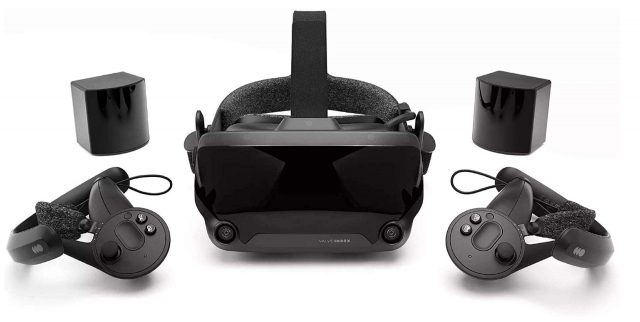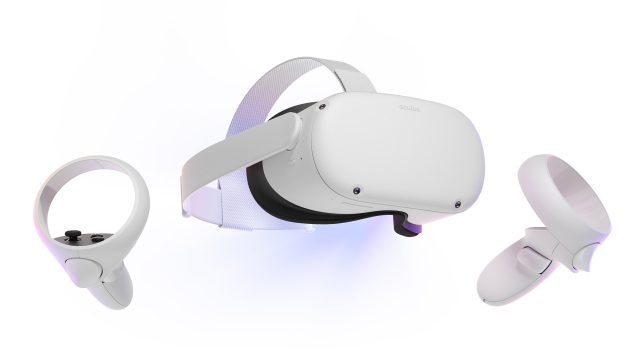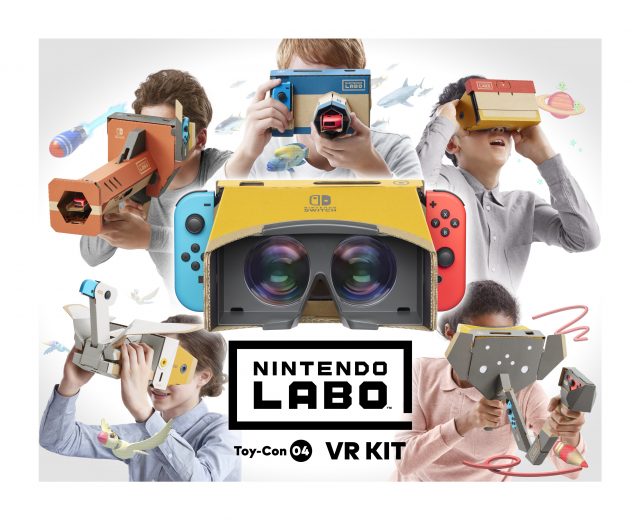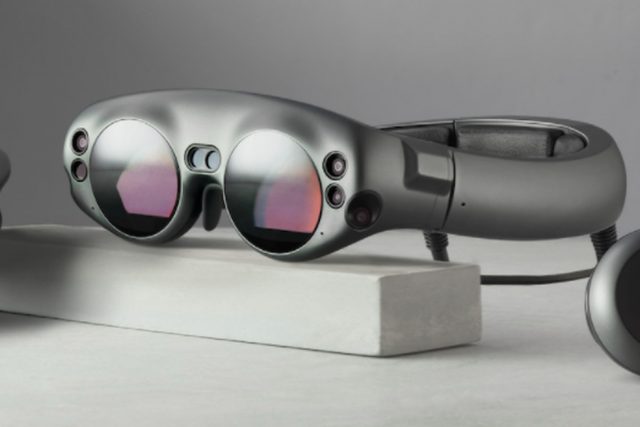I will be explaining my choices with respect to the following factors ranked from highest to lowest. These are based on my experience and preferences.
- Ecosystem/Support – This is very important. Without the proper games/software/applications to accompany the product, the AR/VR headset is little more than an expensive paperweight
- Hardware/Performance (Graphics, Resolution, Latency) – I value resolution and frame-rate a lot because it really adds to the user’s experience.
- Price – VR/AR is currently expensive tech, there’s no avoiding it. If I had the option, I would pay more for a more complete/legitimate experience. It’s that, or just wait until the price/performance ratio evens out.
VR Devices
I’ve picked out 3 VR headsets from all price points (Expensive, Affordable, and Budget).



| Valve Index | Oculus Quest 2 | Nintendo Labo VR | |
| Type | Tethered | Standalone | Standalone |
| Field of View(Degree) | 130° | 100° | 110° |
| Resolution(pixels – per eye) | 1440 x 1600 | 1832 x 1920 | 1280 x 720 (Total) |
| Refresh Rate(Hz) | 120Hz (up to 144 in experimental tests) | 90Hz | 60Hz |
| Software Support | SteamVR, PC | SteamVR, PC, Oculus Store | Nintendo Store |
| Degrees of Freedom | 6DOF | 6DOF | 3DOF |
| Price (USD) | $999 | $299 | $79.90 |
Winner: Valve Index
The Nintendo Labo is a very unique VR headset, it is essentially Google Cardboard on steroids. The entire VR set is made of DIY, foldable cardboard objects such as a camera, a giant blaster, animals, a wind-blowing foot pedal, and the goggles themselves. It has very niche and unconventional approach to VR, and provides very casual, simple fun for people looking for that kind of experience. It doesn’t remotely match the performance level of the other 2 headsets, with only 3DOF, and a 60Hz display on a much lower resolution of 1280×720 pixels, which strips away much of the immersion. As it uses the Nintendo Switch for hardware, the VR set itself is cheap, and the games are limited to what is on the Nintendo Store. This ranks last as I prefer greater immersion, performance, as well as a wider library of games to choose from.
The Valve Index and the Oculus Quest 2 compete in the same category of VR, offering both 6DOF and similar game libraries to choose from. However, the Valve Index offers something very unique that isn’t found on other VR devices – its ability to track individual finger movement and grip strength. This allows for a much higher level of immersion in the VR experience, it allows users to pick up objects by gripping the controller instead of pressing a button, allowing for greater immersion, and pushing the boundaries of user agency in the simulated environment. Unfortunately the Valve Index is a tethered device, which means less freedom of movement.
In terms of performance, the Valve Index offers 130° compared to 100° FOV in the Oculus Quest, it also boasts higher refresh rates than the Quest. The only shortfall would be resolution, with the Oculus Quest sitting at a whopping 1832 x 1920pixels per eye (Nearly 4K resolution!) vs 1440 x 1600pixels per eye for the Valve Index. However, there is smaller perceivable difference the higher you go, so that’s not as important.
Overall, the Valve Index wins. It is pricey, but the most impressive amongst the lineup of VR headsets.
MR Devices
There weren’t many well-known options in the MR space, so I chose to compare these two.


| Headset Name | Microsoft HoloLens 2 | Magic Leap One |
| Type | Standalone | Standalone (Connected to lightpack) |
| Resolution(Pixels – per eye) | 2048 x 1080 | 1280 x 960 |
| Field of view (degrees) | 52° | 50° |
| Refresh Rate (Hz) | 120Hz | 120Hz |
| Price(USD) | $3500 | $2300 |
Winner: You guessed it – Hololens 2
The Magic Leap One is no doubt an impressive MR device that offers a respectable resolution of 1280 x 960pixels per eye, a standalone device, and hardware that is able to handle most graphical tasks seamlessly. It also allows for 6DOF, and hand-tracking via the in-built cameras. Furthermore, Magic Leap has numerous entertainment partnerships which are clearly directed at consumers rather than enterprise users, and therefore seems more appealing for the casual user.
In terms of raw performance, power, and features however, whatever the Magic Leap 1 can do, the Hololens 2 can do better. It has the best resolution out of all MR devices, at 2048×1080pixels per eye. Not only does the Hololens 2 have more powerful hardware, the Remote Rendering feature allows the device to utilise cloud computing to overcome hardware restrictions.
While Magic Leap can only recognise a limited number of fixed gestures and utilises a controller. The Hololens 2 does away with a need for controllers entirely, as the on-board cameras are capable of tracking up to 25 points of articulation with both hands in space, allowing natural touch and grasping to move holograms without the use of any additional hardware, which makes for a more intuitive and immersive user experience.
The HoloLens 2 also has more advanced eye-tracking technology and voice recognition, which greatly increases the range of control a user can have in a Mixed Reality environment.
To top it all off. Hololens is backed by Microsoft, one of the world’s largest tech companies. With all the talent, money, and enterprise partners that a tech company can afford, there’s a lot more potential in the growth and development of Hololens compared to the Magic Leap.
